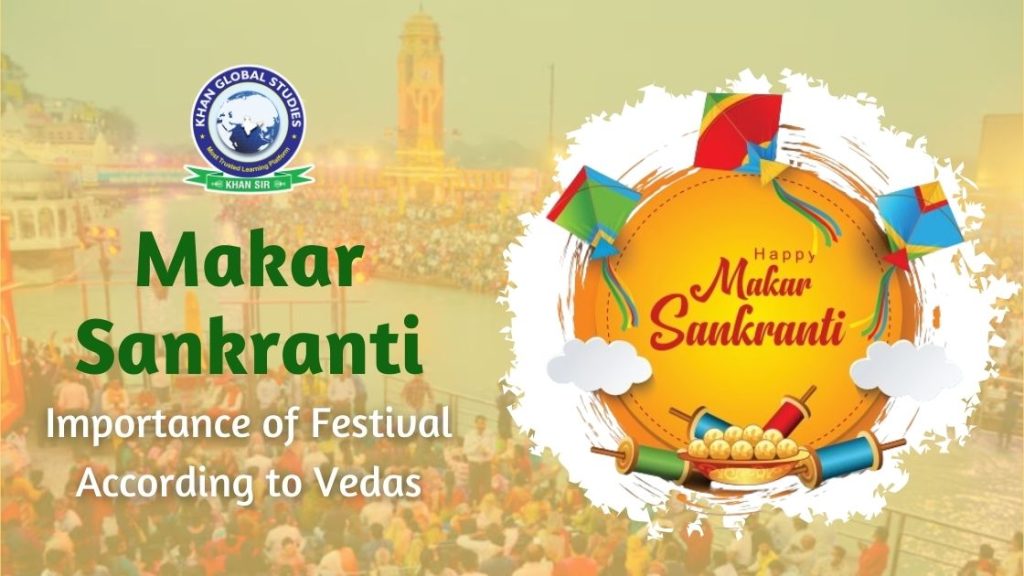Every year, on January 14, India welcomes a wave of festive joy across the country. Amidst the yellow colors and blue skies decorated with colorful kites, the country celebrates endings and a new beginning with Makar Sankranti – The Harvest Festival.
What is Makar Sankranti and why is it celebrated?
In the Vedas, Sankranti describes the transition of the Sun from one zodiac sign to another. Hence there are 12 Sankrantis in a year. People consider it to be the most auspicious and also called ‘Pausha Sankranti’ and it is one of the few Hindu festivals following the solar cycle. The importance of Makar Sankranti is much more than its religious significance. The festival also marks the beginning of the harvest season when people worship the new crops and share happiness.
It heralds the change in seasons, as from this day, the Sun begins its movement from the Dakshinayan (South) to the Uttarayan (Northern) hemisphere, marking the official end of winter. Both a religious occasion and a seasonal ritual, the occasion also marks the entry of the Sun into Capricorn.
Traditional Meaning and Significance of Makar Sankranti According to Ayurveda
According to Hindu scriptures, on the day of Makar Sankranti, Lord Vishnu defeated the terror of demons cut off their heads and buried them under a mountain, symbolizing the end of negativity as well as righteousness and living well and prosperity.
Therefore, this day is very favorable for Sadhana – spiritual practice or meditation, as the atmosphere is filled with ‘Chaitanya’, which means ‘Cosmic Intelligence’.
Makar Sankranti Puja and Significance
Apart from its agricultural importance, people also perform special puja (prayers) dedicated to the Sun God, which symbolizes the victory of light over darkness. Devotees offer prayers and perform rituals to express gratitude and seek blessings for a rich harvest and the positive transition of the Sun to the Northern Hemisphere.
Morning Ritual
Ancient texts suggest waking up and taking a bath just before sunrise on the day of Makar Sankranti to have a positive and auspicious start to the day. It is also advisable to add a small amount of sesame seeds or sesame seeds to the bathing water. After bathing, Gayatri Mantra should be chanted and Arghya should be offered to the Sun – water should be offered to the Sun.
Which God is worshiped on Makar Sankranti?
There are many popular stories regarding the festival of Sankranti. Its religious roots emphasize that Surya means “Pratyaksha-Brahman”, “manifestation of the Absolute”, which provides knowledge, spiritual light and intelligence. Therefore, it is a special festival all over the country, where people worship the Sun God and offer gratitude and prayers.
Festive Rituals: What do we do on Makar Sankranti?
To Eat
Makar Sankranti is the time to eat freshly harvested grains, which are first offered to the deities and then eaten. Eating Khichdi is recommended in Ayurveda because it is a light and easily digestible dish. The meaning of eating khichdi is that it prepares the body for the change in weather, from the cold breeze of winter to the coming warmth of spring. As temperatures go from dry cold to surprisingly hot, the body becomes sensitive to imbalance as a result. Thus, Khichdi is an ideal dish to satisfy hunger while providing essential nutrition to the body.
Apart from its benefits for health, cooking and eating Khichdi on this festival is a symbol of unity, as people cook this dish by uniting all the ingredients including freshly cut rice, pulses, seasonal vegetables and spices in a single vessel. It symbolizes the process of life and regeneration, signaling the beginning of the new harvest year.
Ayurveda also suggests consuming sesame seeds and jaggery on this divine day. Sankranti and Til are synonymous as the festival is also commonly known as ‘Til Sankranti’. Sesame seeds can absorb negativity and improve ‘Sattva’ – purity, goodness and harmony, which in turn facilitates spiritual practice.
Kite Flying
The most common attraction of Paush Sankranti, especially in the Gujarat region, is kite flying. The sound of ‘Kai Po Che’ amid the delicious sweets kept on the terrace is almost an involuntary sight that comes to mind when we think of Makar Sankranti. It is also believed that the tradition of kite flying emerged as a practice of good health. The idea was to expose ourselves to the first rays of a summer morning and enjoy the goodness of Vitamin D.
Khan Global Studies family wishes you a very Happy Makar Sankranti! On this auspicious occasion, take some time to reflect on the past, remove negativity and pave the way for a new light to enter your life.
FAQs
Q: What is the meaning of Makar Sankranti?
A: For those who may be curious to know the meaning of Makar Sankranti and its significance, ‘Makar’ means ‘Capricorn’, and the entry of the Sun into ‘Makar Rashi’ or ‘Zodiac of Capricorn’ is called Makar Sankranti.
Q: What do people wear on Makar Sankranti?
A: The traditional Indian saree is the typical choice of attire for Makar Sankranti, with yellow tones and luxurious silk drapes being the more popular choices.
Q: Why do we celebrate Makar Sankranti?
A: Celebrated in different regions of India, Makar Sankranti marks new beginnings as the sun transitions into longer days. It is also called the harvest festival.
Q: Is it necessary to take a bath on Makar Sankranti?
A: On the occasion of the festival, people take a holy bath by taking a dip in the holy rivers like Ganga, Yamuna etc. It is also advisable to have food after bathing.
Must Read:
- Why do we Celebrate the Lohri Festival Every year?
- Top 21 landmark Judgements of the Supreme Court (SC) of India





